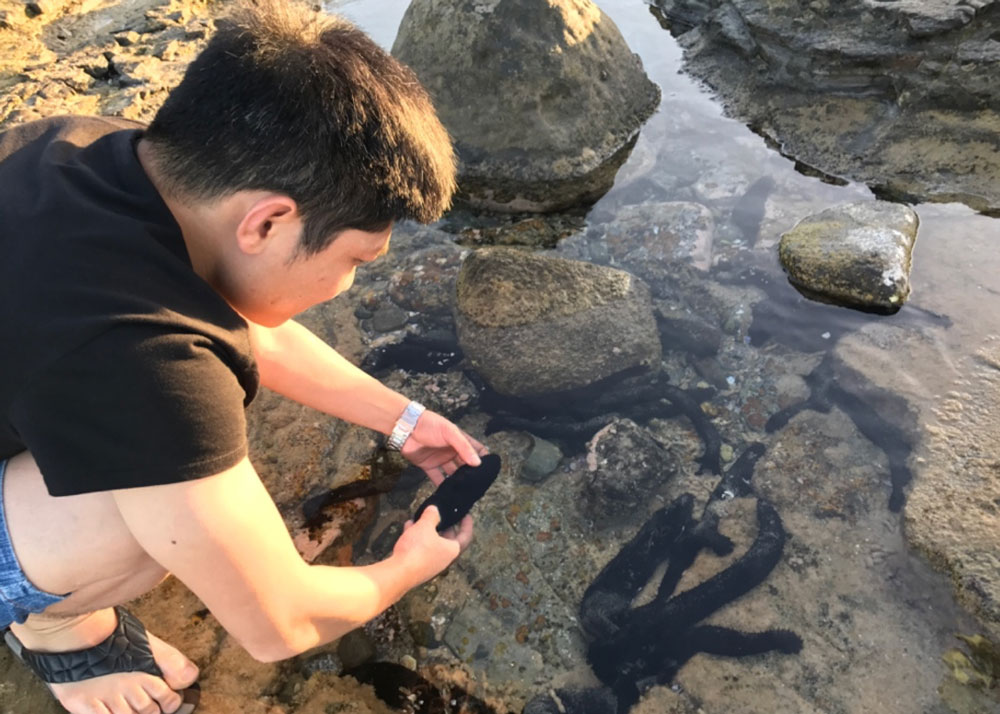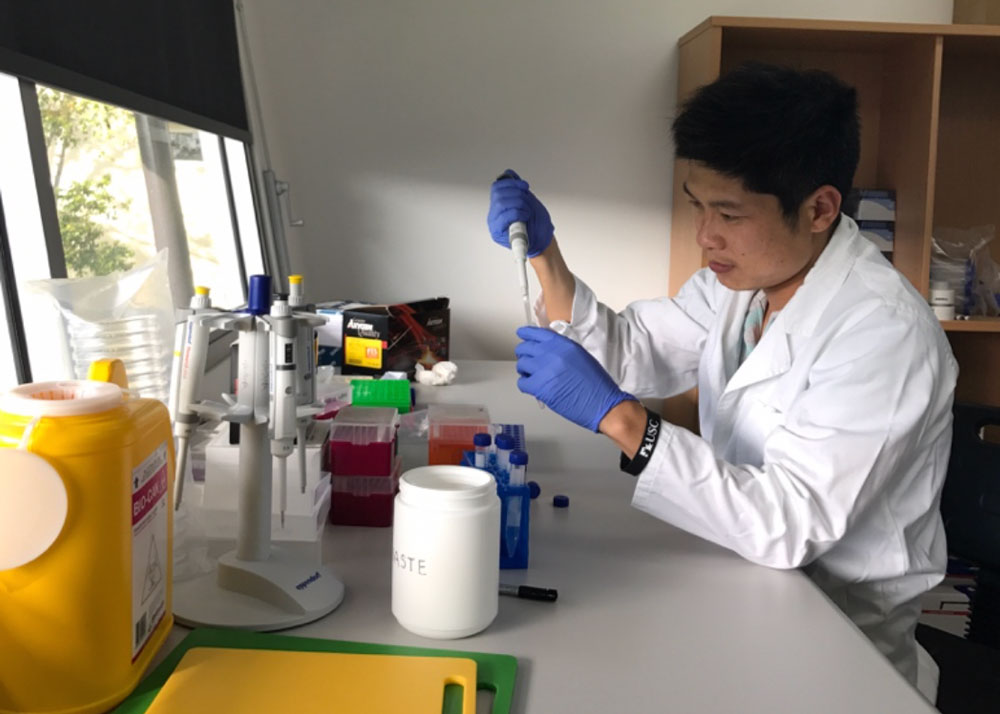

Understanding genetic diversity for sea cucumber conservation in Vietnam and Australia
June 10, 2019
As part of our efforts to support and encourage young Australians in study, careers and volunteering in international agricultural research, the Crawford Fund State Committees proudly support our International Agricultural Student Awards. The 2018 recipients of these Awards were announced in May, and we are enjoying the process of sharing the journey of these 22 dynamic Australian tertiary students as they gain international agricultural research experience and expertise.
Throughout 2018 and the early part of this year, the successful Award recipients will travel to their host countries to research and explore their chosen topic areas. You can follow their progress here on the Crawford Fund website and read more about their findings, learnings and any challenges they encounter.
To-date we have featured the experiences of University of Western Australia student, Christian Berger; Queensland University of Technology PhD candidate, Thomas Noble; University of Melbourne student, Kimberly Pellosis; Luisa Olmo from the University of Sydney; Rachael Wood from Charles Sturt University; University of Melbourne student Ziyang Loh; Lucinda Dunn from the University of Sydney; Jessica Fearnley from the University of New England; the Australian National University’s Jacinta Watkins, University of Queensland Honours student, Tamaya Peressini, the University of Adelaide’s Mathu Indren, University of the Sunshine Coast PhD student Samantha Nowland, and most recently, Charles Sturt University student, Brooke Kaveney, and the University of Sydney’s Marisa Mitchell.
Thanks to The Crawford Fund QLD Committee, we share with you this summary of University of Sunshine Coast (USC) student Chieu Hoang Dinh’s experience as part of an ACIAR project, “Expansion and diversification of production and management systems for sea cucumbers in the Philippines, Vietnam and northern Australia.”

As part of his project, “Analysis of genetic diversity for sea cucumber conservation in Vietnam and Australia,” the first comprehensive study to investigate genetic diversity in sea cucumber H. leucospilota using single nucleotide polymorphisms (SNPs), Chieu Hoang Dinh analysed tissue samples of sea cucumbers collected from five locations in Australia and Vietnam in 2018. Genetic sequencing and data analysis were undertaken, with the results now available to guide future restocking, management, conservation and captive breeding initiatives.
“Sea cucumber, Holothuria leucospilota, is being overfished, which has led to the rapid exhaustion of wild populations. Analysis of population genetic diversity of natural populations is, therefore, necessary for the restoration and management of wild populations, and to avoid inbreeding in aquaculture,” said Chieu.
Sea cucumbers are commercially valuable due to their high demand for human consumption and usage as traditional medicines. At present, wild-caught sea cucumber cannot meet the growing demand in Asia and internationally. The black sea cucumber Holothuria leucospilota represents an excellent alternative choice for people who prefer low fat diets because it has high nutritive values: high level of protein and carbohydrates as well as the lowest level of total lipids.

“Since natural stocks have decreased, government-operated stock release programs have been implemented. Analysis of population genetic diversity of wild and hatchery stocks is, therefore, necessary for the restoration and management of wild populations, and to avoid inbreeding in aquaculture populations,” said Chieu.
“Due to the exhaustion of natural sea cucumber resources, artificial breeding has been implemented in Vietnam to produce high quality seed for aquaculture, stock enhancement and sea ranching, however, the large-scale artificial breeding and juvenile rearing has not yet been developed. To achieve this, a better knowledge of the reproductive characteristics and population genetics are required. Analyses of population structure and genetic diversity of black sea cucumbers are critical for the establishment of technical guidelines for resource management and selective breeding in Vietnam,” said Chieu.
Body wall tissue samples of sea cucumber were collected from three regions in Vietnam and two locations in Australia. The three regions in Vietnam were Co To Island (North of Vietnam), Ly Son Island (Middle of Vietnam), and Tho Chu Island (South of Vietnam). In Australia, the samples were from Mooloolaba, Queensland and Darwin, Northern Territory.
An average of 36 samples were collected at each location. The biological information of total weight, gutted weight, gonad weight, gonad development stages, and gender was collected for quantitative analysis.
Genomic DNA extraction was performed at USC and the samples were sent to DArT Company (Diversity Arrays Technology Pty. Ltd) in Canberra.
The results indicated that there was substantial genetic variation within a population and inbreeding level was low in all populations. The effective population sizes, which ranged from 94 to 141 breeding individuals, provides useful information for resource managers to develop restocking plans. Nei’s genetic distances revealed that the genetic divergence was large between Darwin (Northern Australia) and other sea cucumber populations studied. Bayesian genetic cluster analysis showed that Darwin population could be a mixing of two previously isolated populations and was separated into a different cluster. This result should be used to assess the marine barriers, Palaeoecological history (e.g., glaciations) and oceanographic processes, which may have had a role in shaping the genetic variability and population structure of the sea cucumbers.

Collectively, the results from this study provide baseline genetic data to design a restocking management plan, conservation initiatives and captive breeding programs for sea cucumber populations in Vietnam and Australia.
“A concerted effort from different institutions enabled the large-scale collection of sea cucumbers from diverse geographical regions in Vietnam and Australia. This also helped to strengthen the collaborations between the Vietnam Research Institute for Marine Fisheries and University of the Sunshine Coast, Tasmanian Seafoods Pty. Ltd. and the Darwin Aquaculture Centre for potential future research in sea cucumber species,” said Chieu.
“The achievements of this project will bring commercial benefits to both Australia and Vietnam institutions/hatcheries, where the Australia institutions will transfer molecular genetic and hatchery technologies to Vietnam in order to develop the sea cucumber aquaculture sector and genetic conservation,” he said.
“I would like to acknowledge the financial support of the Crawford Fund and laboratory facilities provided by the Genecology Research Centre, University of the Sunshine Coast (USC), Australia. I also express my deep gratitude to Prof Wayne Knibb, Dr Nguyen Hong Nguyen, Prof Abigail Elizur, A/Prof Scott Cummins and Dr Ajith Premachandra for their supervision and support from the original proposal to the project’s conclusion,” said Chieu.
“I extend my thanks to researchers of Research Institute for Marine Fisheries for their assistance in sample collection and dissection in Vietnam. My project was supported by USC-VIED PhD scholarship, a joint initiative between the Ministry of Agriculture and Rural Development, Vietnam and USC, Australia.”
An article on this research published by the University of the Sunshine Coast is available here, and the project’s findings will be reported in a research paper “Genetic diversity and population structure in sea cucumber H. leucospilota in Australia and Vietnam”, later this year.




